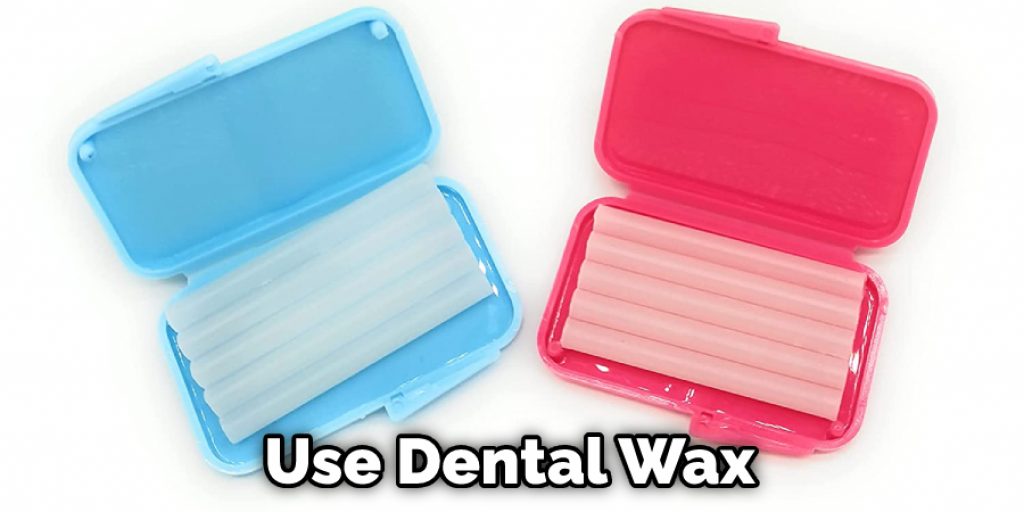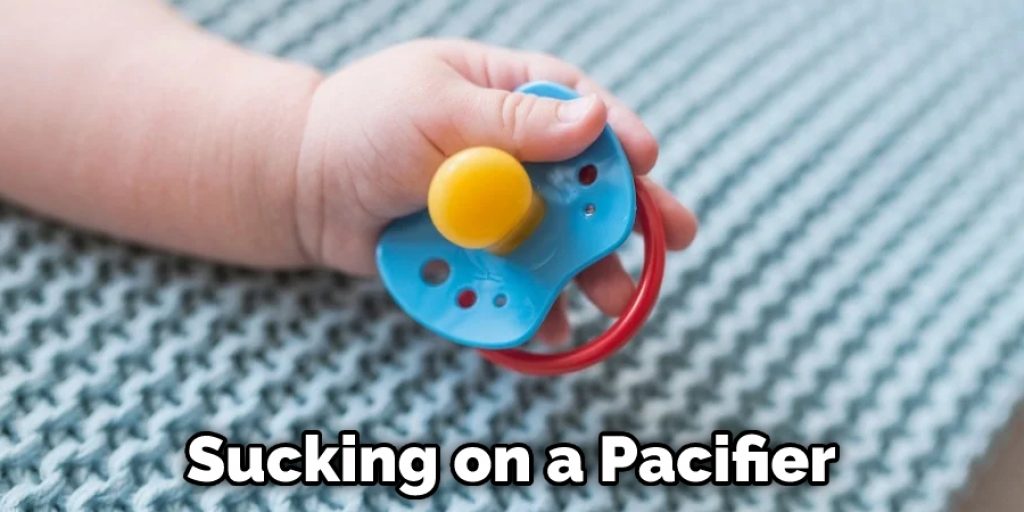In children, tongue thrust is often caused by undeveloped oral motor skills. This means the child has not yet learned how to use their tongue and mouth muscles properly. A common result of tongue thrust is that the child will push their tongue forward out of their mouth when they speak or swallow. This can cause speech problems and make it difficult for the child to eat correctly.

A parent can do exercises at home to help their child develop better oral motor skills and improve their tongue thrust. In this blog post, we will give some advice on how to fix a tongue thrust. We will discuss what causes tongue thrust, identify it, and some exercises you can do at home to help your child overcome it.
Summary: Fixing a tongue thrust can be done with a few steps. Use a tongue depressor to identify the issue, then use a mirror while flossing your teeth and put a thumb in your mouth to help fix the issue. Seek treatment if it persists and clean or replace the retainer if necessary.
What Causes Tongue Thrust
The most common cause of a tongue thrust is when babies put objects, such as their fingers and toys, in their mouth to self-soothe. Babies learn to do this because they can’t speak, providing them with some form of comfort. However, as the child’s mouth is developing and growing, they may not be able to keep their tongue centered in their mouth.
Some children learn to stick their tongues out of their mouth as a result of bad habits. They may also be treated improperly as babies, being put to sleep on their stomachs or having the bottle propped up in their mouth. This causes them to prefer placing objects against the roof of their mouth.
How to Identify Tongue Thrust
The first step to correcting a tongue thrust is recognizing it. The most obvious signs of a tongue thrust are:
- Teeth that stick out,
- The need to breathe through the mouth or snore, and
- Morning headaches.
Other less-obvious signs include:
- Earaches,
- Frequent throat clearing,
- Voice cracks or breaks,
- Trouble articulating certain sounds, and
- Chronic neck pain.
How to Test for a Tongue Thrust
There are two types of tongue thrusts: anterior (to the front of the mouth) and posterior (to the back of the mouth). The first step is identifying if you have one. If you know that you don’t swallow with your lips closed, then you probably do a tongue thrust and need to fix it. To test for an anterior tongue thrust: put your thumb in front of your teeth and see if the tip of your tongue is touching it when you swallow (you should not be able to feel this on your hand).
You can also put a mirror in front of your mouth and watch for the tip of your tongue. To test for a posterior tongue thrust: place your finger slightly to the back of your bottom teeth (so you can touch them) and push it forward slowly until you feel the tip of your tongue pushing against your finger. You can also watch for the bulge of your tongue in the mirror when you swallow.

Step by Step Guide: How to Fix a Tongue Thrust
Step 1: Using a Tongue Depressor
The doctor will use a tongue depressor to hold your tongue out so they can see where it is touching the inside of your cheeks. They are checking for tongue thrust.
Step 2: Flossing With a Mirror
It’s important to floss under your retainer, especially near the back teeth. This will help keep food from getting stuck and causing harm.
Step 3: Using a Mirror
A mirror can be used instead of a tongue depressor to help you see your teeth. You don’t need either a tongue depressor or a mirror to do this, but it may help.
Step 4: Using a Thumb
The patient can use their own thumb to feel for the tongue thrust by pressing down on the inside of their cheeks near or behind their back teeth. They should be able to tell where the retainer is touching and whether it is touching in all places equally or if some spots are sticking out more than others.
Step 5: Fixing the Tongue Thrust
Once you have determined that their tongue thrust is out of place, there are several options to fix it. To glue the retainer down again, you can use superglue, dental wax, or silicone. If this fails to work, you can contact your patient’s orthodontist.

Step 6: Treatment
When treating a tongue thrust, you do not need to remove the retainer. You will only be fixing it temporarily, if at all. If this is not your patient’s first time having a tongue thrust, they likely know what they’re doing and how to fix it. Ensure that they keep their tongue out during meals or when they are wearing the retainer.
Step 7: Cleaning the Retainer
After you have fixed the tongue thrust, clean the retainer thoroughly. Ensure that there is no food stuck in or under it, as this could cause tooth decay. You can use a soft-bristled toothbrush and soapy water to clean the retainer.
Step 8: Replacing the Retainer
Replace the retainer in your patient’s mouth, ensuring it is flat against their teeth. If it feels too tight, you may have used too much glue and will need to remove it to make a smaller amount. Remind your patient not to use their teeth as tools when wearing the retainer. Also, remind your patient that it’s normal for the teeth to feel tender when they first begin wearing a retainer.
Tips To Prevent Tongue Thrust From Happening
1. When nursing, make sure the baby is latched on properly.
2. When feeding, keep a soft grip on the bottle or cup. This will help reduce pressure to the tongue and lips during feedings. It also helps prevent gagging or choking if too much suction occurs on certain foods (i.e., carrots).
3. Avoid putting pressure on the front of the tongue while feeding.
4. Encourage your child to talk during meals. The more talking they do, the less likely their tongue will glide back into their mouth while eating or drinking.
5. Breastfeeding mothers are encouraged to pump for a few minutes before nursing if they notice a tongue thrust when feeding the baby. The breasts become soft and have less suction for your child while nursing.
6. Try positioning the child upright while eating or drinking. This will allow them access to proper swallowing patterns, and it also helps prevent choking hazards from occurring if the food accidentally slides backward.

7. Try not to carry your child around by the bottle or sippy cup. If you must, make sure to keep it at waist level so that gravity aids in keeping the food down.
8. Different foods have different consistencies and ways they travel through the mouth/throat system due to their physical properties (i.e.: carrots are more difficult to maneuver). If the child has a hard time with certain foods, you could try pureeing them first.
Can Tongue Thrust Be Corrected in Adults
The first step in treating tongue thrust is determining whether it can be corrected. A tongue thrust, sometimes called a faulty tongue posture, occurs when the front of the tongue presses against the upper teeth or gums while swallowing or speaking. The condition is often referred to as an anterior open bite because of the tendency for the lower jaw to shift back while the upper jaw moves forward during speech.
The degree to which tongue thrust can be corrected depends on several factors, including the patient’s age at the start of treatment and how long the condition has been allowed to exist. Most often, tongue thrust is not detected in children until they are at least five or six years old because that is when they begin learning to speak and use their tongues while swallowing.
By the time a child begins school, tongue thrust is usually well established and will almost always continue throughout life unless it is treated. Early treatment in children is so important; the younger the child, the better the chance of correcting the condition permanently.
Does Tongue Thrust Go Away
Tongue thrust is a common problem for children when learning to talk. When speaking, they often push the tip of their tongue against the top teeth to convey certain sounds. As long as they focus on stopping this behavior while talking, it will go away over time. If you would like to find out how you can help your child do this, please read on.
Tongue thrust may not go away when the child becomes an adult. It may result in several dental and orthodontic problems later on in life. For this reason, tongue thrust must be addressed. But, there are treatments available today which will stop this habit. These treatments range from simple exercises to braces on the teeth.
You Can Check It Out to: Fix Teeth Gaps
Frequently Asked Questions
Can Tongue Thrust Be Corrected?
the best way to correct tongue thrust may vary depending on your individual anatomy and physiology. However, some tips that may help include practicing reverse breathing exercises and using a soft pillow or bolster under your head during sleep in order to keep your chin elevated. Additionally, you can use an intraoral splint or mouth guard if you experience extreme neck pain from tongue thrusting.
What Causes A Tongue Thrust?
A tongue thrust is commonly associated with speech impediments, but it can also occur as a result of eating or drinking something that is too heavy or dry. When the tongue falls back against the roof of your mouth, this causes difficulty in articulating words. Sometimes referred to as dental carryover, a tongue thrust can be corrected by maneuvering the tongue forward so that it rests on top of teeth instead of behind them. This should help to improve phonation and correct vowel sounds.
What Exercises Fix Tongue Thrust?
However, some general tips that may help include:
- Practicing the jaw hinge – This is a basic exercise that helps to open up the jaw and allows for better breathing and speech. You can do this by placing your hand on your lower jaw and slowly opening it up.
- Swallowing correctly – One common symptom of tongue thrust is difficulty swallowing. To combat this, make sure to practice swallowing correctly multiple times a day. Try to do exercises that help you to relax your throat muscles, such as gargling with warm water or using an oral irrigator.
- Strengthening the tongue muscles – Another way to improve tongue thrust is by strengthening the tongue muscles. This can be done through exercises such as tongue twisters or tongue flaps. Once you have mastered these exercises, you can move on to more challenging exercises such as the Modified Palate Method or Tongue Twister 2-Step Method.
- Practicing good oral hygiene – Poor oral hygiene can lead to a number of problems, including difficulty with tongue thrusting. Make sure to brush your teeth twice a day and use mouthwash on a regular basis.
Where Should Your Tongue Rest When Sleep?
Most people instinctively place their tongues on the roof of their mouth when they fall asleep, but this is not always the best way to sleep. The optimal position for your tongue while you’re sleeping is tucked behind your front teeth and slightly up in the corner of your mouth. This positioning will help to prevent snoring and ensure a peaceful night’s rest.
Conclusion
Many of us will experience a tongue thrust at some point in our lives. This occurs when the tongue pushes through the teeth instead of resting against the roof of the mouth. For children, this can be caused by sucking on a pacifier or bottle past age three or from thumb-sucking. On the other hand, it may be due to stress, anxiety, or poor dental hygiene habits in adults.

A tongue thrust can cause many problems for children, but it can be treated effectively with the right approach. In this blog post, we have discussed how to fix a tongue thrust and a few causes that create this problem. If you think your child may have a tongue thrust, consult with a speech therapist or other healthcare professional for help.
